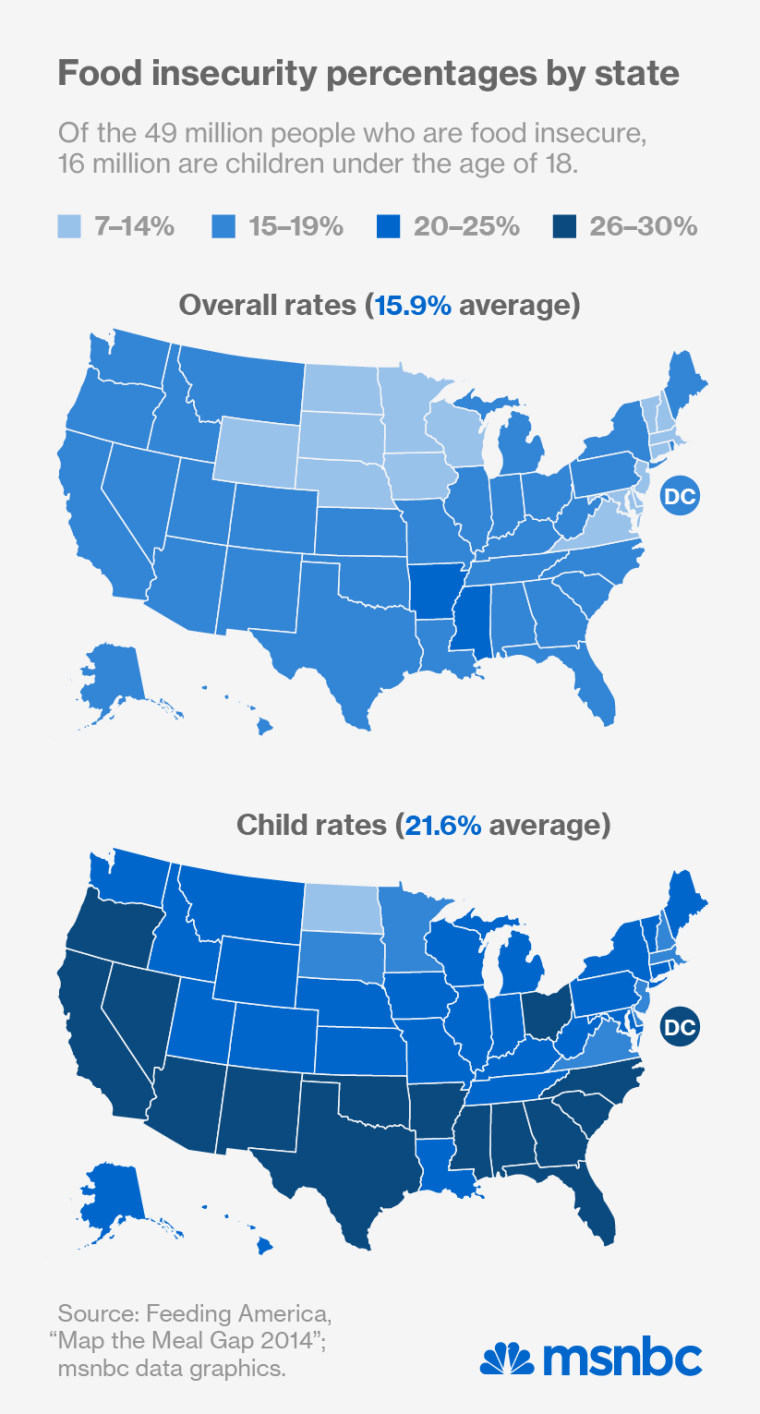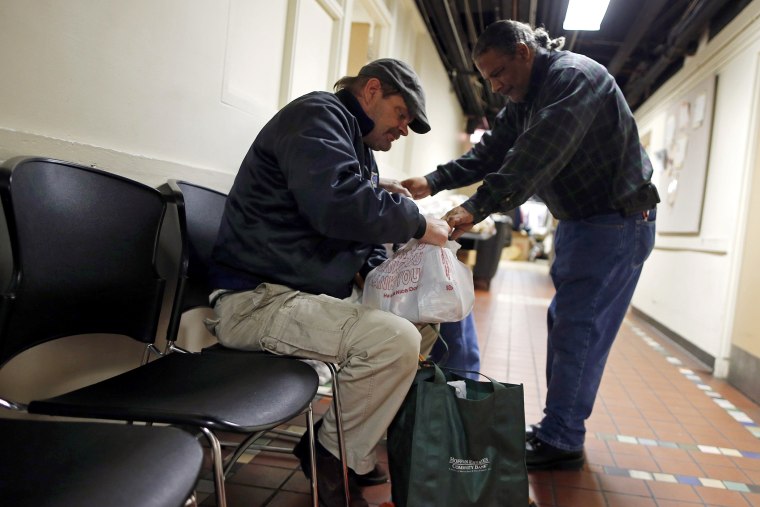There is a hunger crisis taking place across the United States, and it is likely to get even worse. As of 2012, 49 million Americans suffer from food insecurity, defined by the U.S. Department of Agriculture (USDA) as lack of access to "enough food for an active, healthy life.” Nearly one-third of the afflicted are children. And millions of them don't even have access to food stamps, according to a new report from the anti-hunger organization Feeding America.
The report, called "Map the Meal Gap," tracks food insecurity by county and finds some regions of the country where the child food insecurity rate can go as high as 41%. The major hot spots for hunger tend to be rural counties, nearly 60% of which are classified as "High Child Food-Insecurity Rate Counties." Yet in terms of absolute numbers, major urban areas take the lead, with Los Angeles County alone laying claim to more than 620,000 food insecure children.

"The variation of food insecurity at the county level is quite significant," said Feeding America's Chief Communication and Development Officer Maura Daly. Among both children and adults, the least hungry county in the United States is Slope County, N.D., which has a food insecurity rate of 4%. Humphreys County, Miss., where about a third of the population is food insecure, lies at the other end of the spectrum.
About 27% of food insecure people—including 32% of food insecure children—live in households which are ineligible for food stamps, the main public assistance program dedicated to combating hunger. That's because food stamps only go to households with an income at or below 185% of the poverty line; hunger, though it may be linked in the popular imagination with utter destitution, is now encroaching on the lower middle class.
"When we talk about unemployment being one of the primary drivers of food insecurity, oftentimes you have people living right on that brink of 200% of poverty or higher," said Daly. "And if you have a loss of a job [in the household] ... you can go almost overnight from a food secure household to a food insecure household."
As grim as the numbers look, they probably don't capture the full extent of the problem. The 2014 edition of "Map the Meal Gap" tracks trends in food insecurity between 2011 and 2012. In all likelihood, subsequent policy decisions in Washington have caused food insecurity to rise even higher. Feeding America and other anti-hunger organizations have yet to quantify the damage done by the 2013 food stamp cuts and the further cuts included in the 2014 Farm Bill.
"I think it's very possible that we will see an increase in food insecurity as a result of the [food stamp] cuts," said Daly. "Unfortunately, all data is retrospective when it comes to federal government tracking and we oftentimes don't know these things until later."
Yet early indicators are not encouraging. Feeding America's member food banks—described by Daly as "canaries in a mineshaft" when it comes to hunger—are reporting ever-increasing levels of demand for their services. Recent actions on the state level may have helped to slow the rate of rising hunger, but not stop it, much less reverse it. At least for the near future, America seems likely to only get hungrier.
